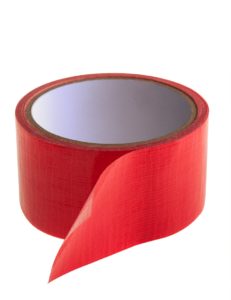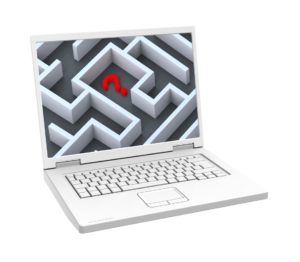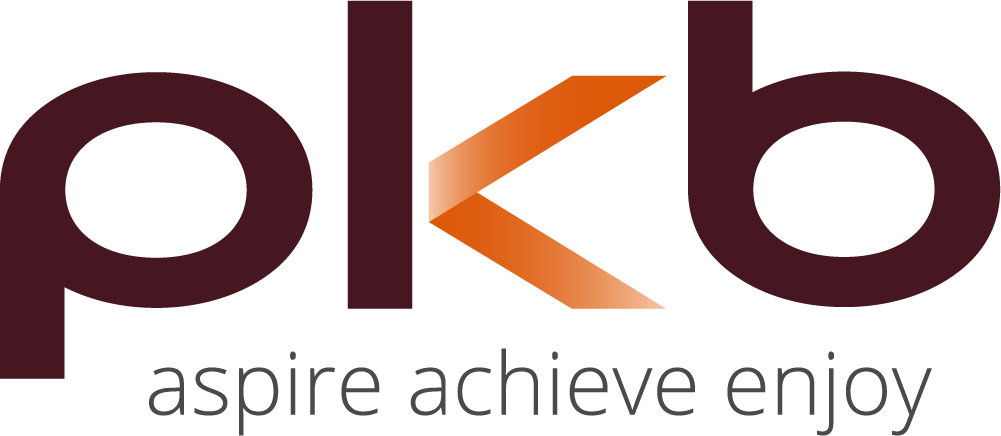HMRC’s plan to Make Tax Digital by 2020 hasn’t received a warm welcome from most of our (usually positive and upbeat!) clients. But, with the VAT digital deadline less than a year away, we all have to get over it and get on with it. Here’s our helpful guide that should get rid of your nagging doubts — and doubtful nags — once and for all.

I thought Making Tax Digital had got postponed? Why are you bothering me with this?
HMRC’s vision of a completely united Online Tax System has been pushed back till 2020, so you won’t have to submit your Self-Assessment or Business Accounts digitally until then. But VAT returns do have to be filed digitally from April 2019, for VAT registered businesses with taxable turnovers of £85,000 or above.
My business is small, this won’t apply to me.
That’s £85,000 turnover not profit. We find many businesses reach the £85,000 annual turnover quite quickly.
What is even the point of all this? It’s just needless red tape.

Actually, if you watch HMRC’s explanatory video about MTD, the new process has lots of benefits
What we like the most is that, when you have an online package, we can log in to review your accounts or answer any bookkeeping queries as they arise.
The main benefit is to HMRC, ultimately. It’s been estimated that over £4bn a year is lost into the “tax gap” purely by businesses making minor VAT errors. So, this move into a more streamlined system should benefit the UK as a whole — fingers crossed.
For small-business owners like me, this is just too complicated.
It’s really not. You probably already file your tax and VAT returns online. If you’ve followed our advice about cloud accounting, you’ll know there are many reasons why online accounting saves you time, by giving you an up-to-date statement of your accounts in real-time.
The only change you’ll have to make is in how you “bridge” the accounting software you use to store your VAT accounts, and how you send that information over to HMRC.
Sorry – I’m lost.
Yes, that was complicated. Let’s try again. HMRC has released three examples of what it means by being “digitally linked”:
- The business records transactions in accounting software (A), transfers the totals to spreadsheet (B) where adjustments are made for say partial exemption, then it uses another software package (C) to transfer the totals to HMRC. The transfer of data between A, B and C must all be done digitally.

- The business uses accounting software to record all its transactions and to submit the VAT return. However, it uses a spreadsheet to work out the VAT adjustment on road fuel scale charges. That adjustment is manually typed into the main accounting package as a journal entry. As the road fuel adjustments are not part of the records which are prescribed to be kept digitally, the manual journal entry is permitted, and the business is compliant with the MTD regulations.
- A VAT group uses three different accounting packages (A1, A2, A3) for different companies in the group. The totals are collected in a spreadsheet (B) to create the VAT figures needed for the group VAT return. Spreadsheet B is then digitally linked to another software package (C) which is used to submit the group VAT return to HMRC. As long as software family A is digitally linked to B, which is also digitally linked to C, the requirements of the MTD regulations are met.
Seriously, it’s like you’re talking Latin.
If it’s really daunting, don’t forget we offer a full Accounting and VAT service, where we can take all the stress out of this for you.
But if you’d like to do it yourself, all you need to do is ensure that you start compiling your VAT accounts using HMRC-compatible accountancy software, and then file your VAT returns online. That’s really it.
I use the HMRC online VAT-filing service. Can’t I just carry on using that?
You’d think so, wouldn’t you? But no. HMRC recently announced that its free VAT online filing service is not being updated for MTD. So that service will not be available to any business with a turnover above the VAT threshold from April 2019.
So, I have to buy new HMRC-compatible software?
Well, yes. If you’re still using Ye Olde Sage 1892, you will have to upgrade to a newer version. Or if you currently create VAT records using your own spreadsheet, or a Biro and a napkin, you will have to swap over to an approved software program or upgrade your current software. Major software providers will be updating their packages to ensure they’re MTD compatible.
Unfortunately, many of these products incur either an upfront cost, or a monthly subscription fee. So, you will have to find the money for those from now on.
Well, that’s just great. So, do I have to do this straight away?
No. You’ve got until April 2019. But we’re advising everyone to make the switch over to digital accountancy as soon as possible, to give you time to iron out any teething troubles before the deadline is looming. We suggest that you use your business’s next Year End date as the time you switch over. Then you’ll be up and running digitally before the big switch.
If I don’t manage to get it right by April 2019, I’ll get in trouble, right?
If you haven’t created a digital link between your accounting records and HMRC for the first VAT reporting period after April 1st, 2019, you’ll be on the naughty step, yes. But if you simply make mistakes, you’re in the clear – HMRC has confirmed there’ll be a “soft landing” period between April 2019 and March 2020, during which time there’ll be no financial penalties for making record-keeping errors. After the soft-landing period, you’ll face fines for failing to comply with MTD, so get started now.
Where can I find out more information?
Here’s a useful video Q&A from SWAT, and here’s the latest HMRC information. We are also always on hand to answer your questions, or just listen to you complain.
If you already use us to file your VAT, we will continue to do so as before, using our compatible software. We’ll be contacting you soon to tell you more about our service. And if you don’t currently use our VAT services but you’d like to, we are always here! Just Contact Us.
To read news and blogs from Andy Penfold, click here >>



